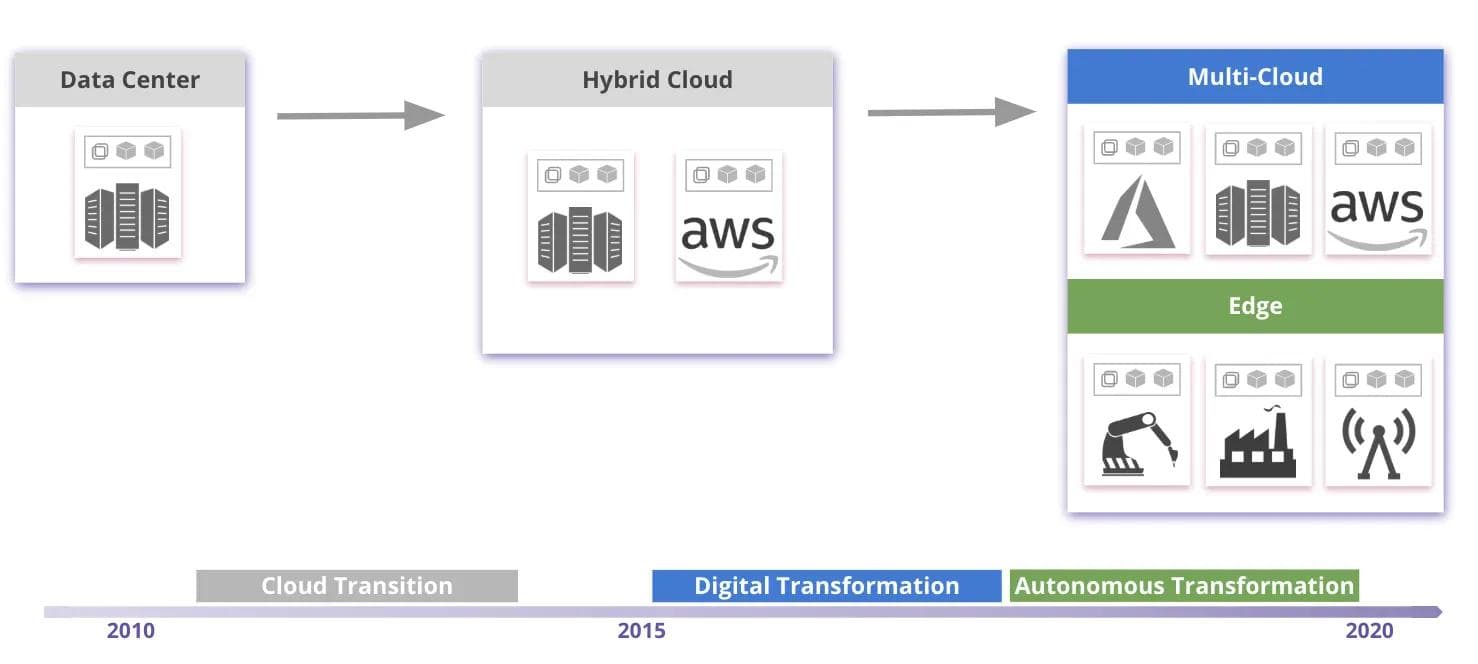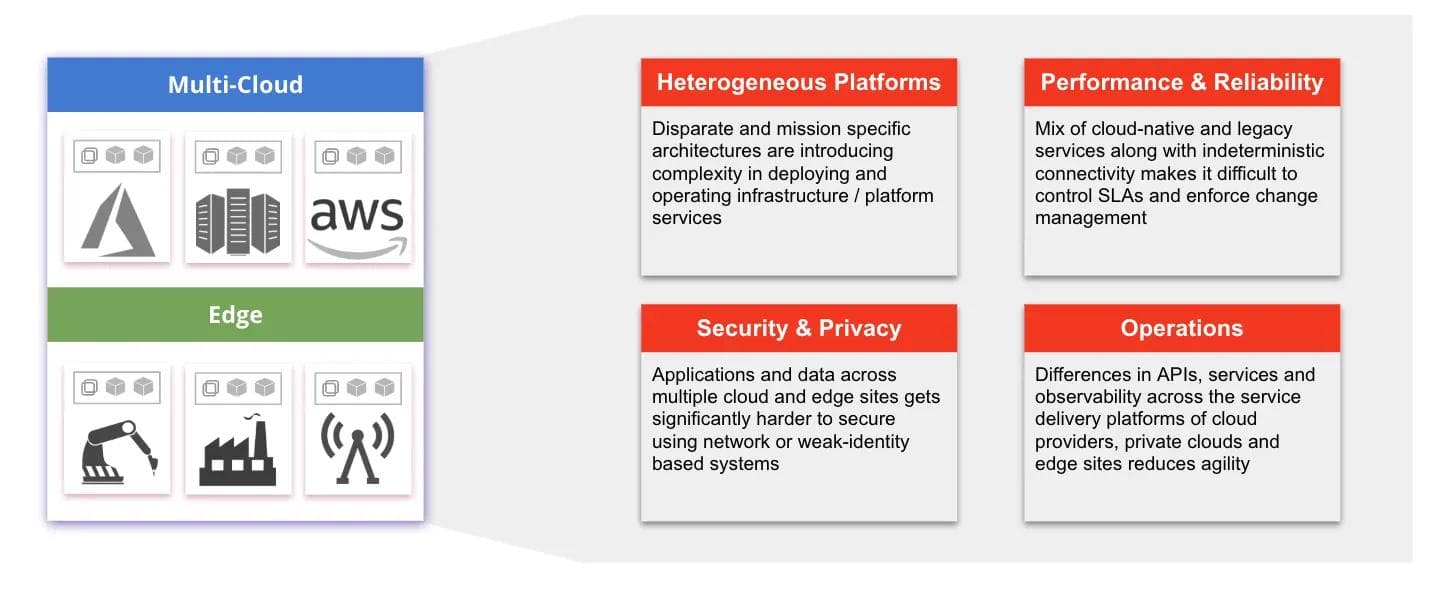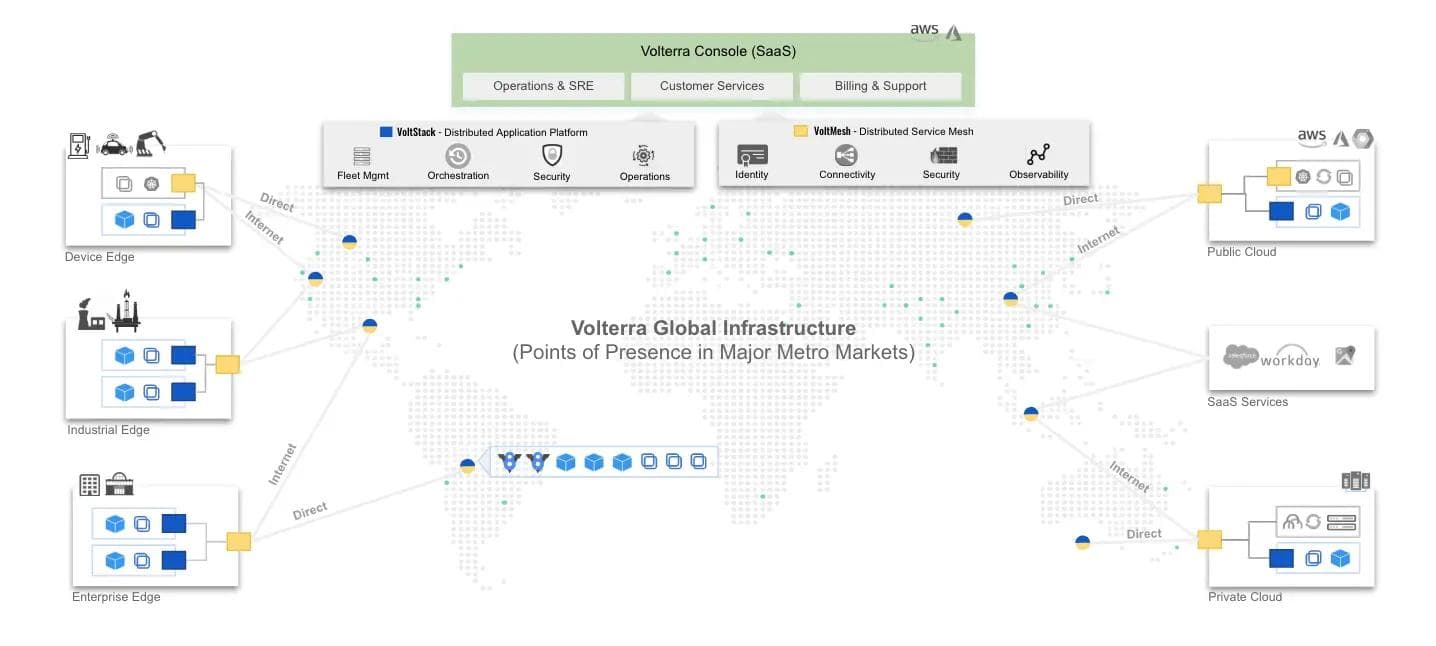After more than two years of working with customers around the globe, heads-down development of a major platform, and yes, many long nights, we have hit a key milestone for our company -- launching.
We’re very proud of what we are launching with -- over 30 paying customers (including Global 100 organizations like SoftBank, a top ten automobile manufacturer, a leading global bank, and more). And more than $50M USD from top-tier venture capital firms Khosla Ventures, Mayfield and M12 (Microsoft’s venture fund) and strategic investors Samsung NEXT and Itochu Technology Ventures.
Most importantly, we are bringing to market an expanded offering that will make a difference for customers around the world...allowing them to “distribute cloud services depending on their application or data needs.” But stepping back, I want to first share what specifically we saw in the market -- or didn’t -- that inspired Harshad and I to innovate the concept of “distributed cloud services.”
Over the last several years, we were heads-down at Juniper growing the SDN business that came from their acquisition of Contrail, our prior startup. In discussions with our OpenContrail user-base -- dozens of Tier-1 telecom operators building mobile networks, as well as large enterprises like Workday, Ebay Europe, Yandex, etc -- it became clear that they were increasingly distributing mission-critical applications based on where data was being generated. And many of them were rapidly migrating to microservices architecture, allowing them to have different instances or clusters distributed across multiple environments...a precursor to the broader multi-cloud movement everyone is talking about today.

At the same time, these customers did not have a cloud-like (aka “cloud-native” in current buzz terminology) approach for deploying and operating the infrastructure to run those applications, nor an efficient and consistent model for managing the applications themselves across these distributed locations.

As we continued in our quest, it became clear to us that there’s a [major] market need for enterprises and service providers to bring a consistent cloud environment to wherever they are distributing their applications -- be it on-premises, one or more public clouds, or a diverse set of edge sites and locations. We also saw how large the scope of this opportunity and challenge was: namely that customers want a consistent cloud environment for both application management and underlying infrastructure. With that, we kicked off our innovation and execution on a holistic solution for what we describe as distributed cloud. Interestingly, Gartner has recently stated that distributed cloud is going to be Top 10 technology trend for 2020.
Fast forward two years and here we are, launching Volterra and our distributed cloud platform. The platform we built -- and it really is a platform approach -- is made up of two cloud service offerings: VoltMesh and VoltStack, all managed through the Volterra Console. They are both 100% SaaS-based and through our console provide a “single logical cloud” for what customers often have as a very distributed and heterogeneous environment of applications, infrastructure and locations.

Over 30 customers are now using different services of Volterra’s distributed cloud platform, and several Global 500 companies are testing it for large multi-cloud or edge projects. Volterra’s customers now include SoftBank in Japan (the world’s 5th largest telephone operating company), a global automobile manufacturer, Cdiscount (#2 French e-commerce co.) and a leading global bank.
It is great to see the huge amount of progress the Volterra team has made in the last two years (thank you team!). It’s also motivating to see how much more work (and innovation) there is to do for Volterra and others to really empower organizations to properly distribute and operate their applications in a cloud-native model. They can be assured that we know it’s only the first period (or second inning, if you prefer a baseball metaphor) in the cloud and distributed application games -- so game on!
About the Author
Related Blog Posts

Build a quantum-safe backbone for AI with F5 and NetApp
By deploying F5 and NetApp solutions, enterprises can meet the demands of AI workloads, while preparing for a quantum future.

F5 ADSP Partner Program streamlines adoption of F5 platform
The new F5 ADSP Partner Program creates a dynamic ecosystem that drives growth and success for our partners and customers.

Accelerate Kubernetes and AI workloads with F5 BIG-IP and AWS EKS
The F5 BIG-IP Next for Kubernetes software will soon be available in AWS Marketplace to accelerate managed Kubernetes performance on AWS EKS.
F5 NGINX Gateway Fabric is a certified solution for Red Hat OpenShift
F5 collaborates with Red Hat to deliver a solution that combines the high-performance app delivery of F5 NGINX with Red Hat OpenShift’s enterprise Kubernetes capabilities.
F5 Silverline Mitigates Record-Breaking DDoS Attacks
Malicious attacks are increasing in scale and complexity, threatening to overwhelm and breach the internal resources of businesses globally. Often, these attacks combine high-volume traffic with stealthy, low-and-slow, application-targeted attack techniques, powered by either automated botnets or human-driven tools.
Phishing Attacks Soar 220% During COVID-19 Peak as Cybercriminal Opportunism Intensifies
David Warburton, author of the F5 Labs 2020 Phishing and Fraud Report, describes how fraudsters are adapting to the pandemic and maps out the trends ahead in this video, with summary comments.